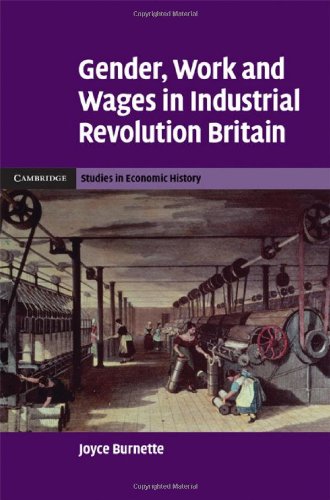Joyce Burnette0521880637, 9780521880633, 9780511394911
Table of contents :
Cover……Page 1
Half-title……Page 3
Series-title……Page 4
Title……Page 5
Copyright……Page 6
Contents……Page 7
Figures……Page 8
Tables……Page 9
Preface……Page 13
Introduction……Page 15
1 Women’s occupations……Page 30
I. Measuring occupational segregation……Page 31
A. The census……Page 32
B. Employment ratios……Page 39
C. Commercial directories……Page 42
II. Survey of women’s work……Page 52
A. Textiles……Page 53
B. Cottage industries……Page 58
Lace……Page 59
Gloves……Page 62
C. Agriculture……Page 64
D. Domestic service……Page 71
E. Variety……Page 74
Conclusion……Page 85
2 Women’s wages……Page 86
I. Interpreting piece-rate wages……Page 98
II. Interpreting time-rate wages……Page 107
III. Productivity differences……Page 117
A. Strength……Page 118
B. Training……Page 129
IV. Did women earn customary wages?……Page 137
Definition 1: Wages were set by government regulation……Page 138
Definition 2: Wages did not respond to the forces of supply and demand……Page 139
Definition 3: Wages were customary in the sense that they were lower than fair market wages……Page 144
Definition 4: Wages were customary in the sense that they were determined by custom even when custom conflicted with market forces……Page 145
Definition 5: Wages are set by market forces but justified by custom……Page 147
3 Explaining occupational sorting……Page 150
A. Models of sorting……Page 152
Model A: Job choice with piece-rate wages……Page 153
Model B: Time-rate wages with sex as a signal of strength……Page 162
1. Patterns of occupational sorting……Page 168
2. Unusual women……Page 177
3. Regional patterns……Page 179
4. Responses to changes in technology and demand……Page 183
II. Occupational sorting and child care……Page 185
A. Why mothers took responsibility for child care……Page 186
2. Comparative advantage in the labor market……Page 187
3. Gender roles……Page 188
B. Why women worked in cottage industry……Page 189
Conclusion……Page 199
4 Testing for occupational barriers in agriculture……Page 200
I. Cross-price elasticities……Page 202
A. Data……Page 204
B. Results……Page 207
II. Wage correlations……Page 214
A. 1768–70……Page 217
B. 1833……Page 219
C. 1860……Page 229
D. France in 1839……Page 232
Conclusion……Page 234
I. Occupational sorting not based on strength……Page 235
II. Sources of occupational barriers among employees……Page 241
A. Government regulation……Page 242
B. Gender ideology……Page 245
C. Guilds……Page 247
D. Employers……Page 254
E. Unions……Page 257
III. Where unions could be successful……Page 263
1. Handloom weavers……Page 268
2. Framework knitters……Page 271
3. Miners……Page 273
4. Agriculture……Page 274
1. Mule spinners……Page 278
2. Tailors……Page 280
3. Wool-combers……Page 282
Conclusion……Page 286
I Consumer discrimination……Page 288
II. Married women and the law……Page 291
III. Capital……Page 295
IV. Education……Page 302
V. Professionalization……Page 303
A. Law……Page 305
B. Medicine……Page 307
C. The church……Page 312
D. Teaching……Page 314
Conclusion……Page 318
7 Women’s labor force participation……Page 320
I. Demand……Page 324
II. Barriers to employment……Page 328
III. Increased household incomes……Page 332
IV. Value of home production……Page 335
V. Gender ideology and changes in preferences……Page 336
Conclusion……Page 339
8 Conclusion……Page 341
Model A……Page 350
Model B……Page 351
Model C: the learning model……Page 353
4.1 Models of discrimination……Page 356
4.2 Cross-price elasticity as a test for gender segregation……Page 357
Within-task versus across-task substitution……Page 358
4.3 Wage correlation as a test for gender segregation……Page 361
PRIMARY BRITISH PARLIAMENTARY PAPERS (BPP)……Page 365
OTHER PRIMARY MATERIAL……Page 366
SECONDARY SOURCES……Page 368
Index……Page 384

Reviews
There are no reviews yet.